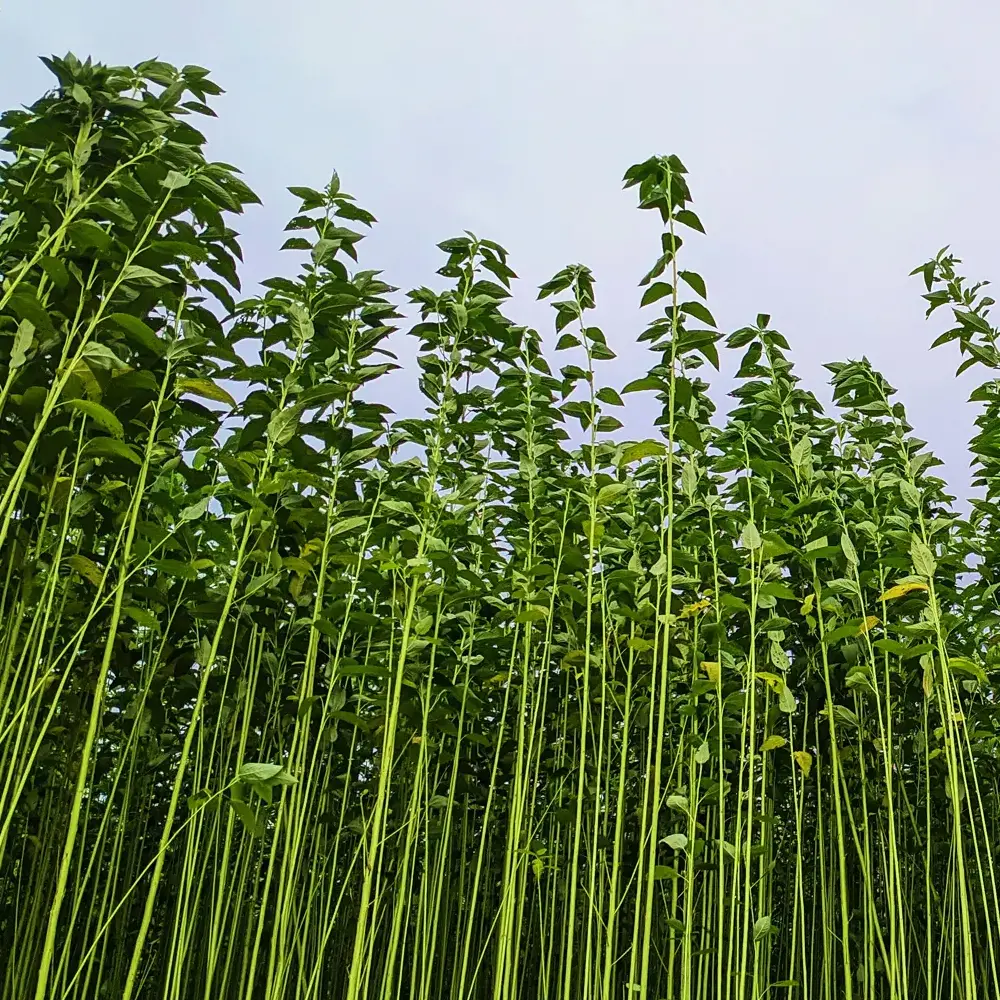
Jute Cultivation
Our bags begin life in India as a fast-growing, sustainable plant called jute
Jute is a natural fibre derived from the stems of the jute plant (Corchorus olitorius and Corchorus capsularis), which belongs to the Tiliaceae family. This plant thrives in warm and humid tropical climates. The plant requires a warm and wet climate with temperatures between 24 to 35 degrees Celsius (75-95 degrees Fahrenheit). It grows well in fertile, well-drained, and sandy loam soils with high levels of organic matter.
"Jute cultivation plays a significant role in the economies of the countries where it is grown"
Jute cultivation typically involves sowing jute seeds directly in the field. The seeds are sown in well-prepared seedbeds, and the seedlings are later transplanted to the main field.
Jute plants have a relatively short growth cycle, typically around 4-6 months. The plants grow to a height of 2.4 to 3.7 meters (8 to 12 feet) and have a hollow stem. Jute fibres are harvested from the plants when they are in full bloom, as this is the stage when the fibres are of the highest quality.
Jute cultivation is prominent in India, which is the leading producer of jute globally. Jute cultivation plays a significant role in the India’s economy, providing income and employment opportunities for the people involved in the cultivation and processing of jute fibres. Additionally, the eco-friendly nature of jute makes it an environmentally sustainable choice compared to synthetic alternatives.
See the jute bag manufacturing process as a whole, or use the button below to read more about the next stage of the process.



